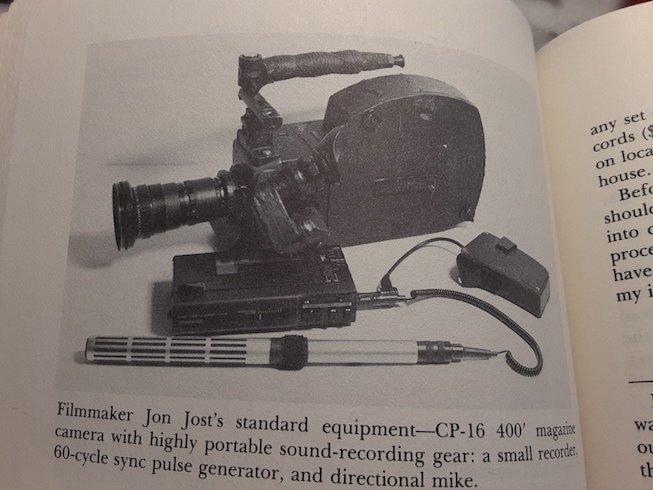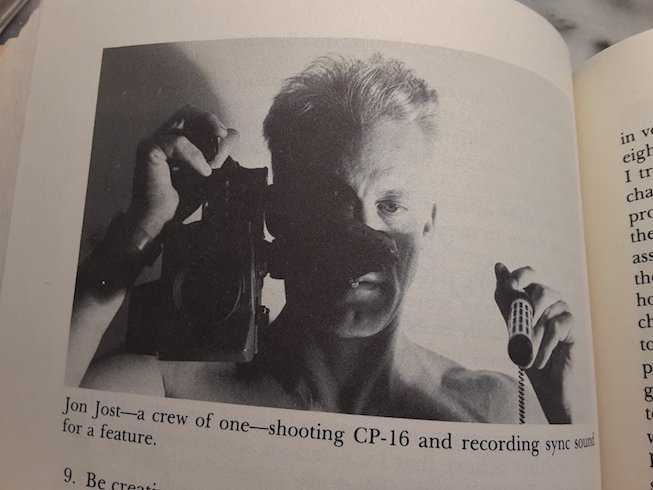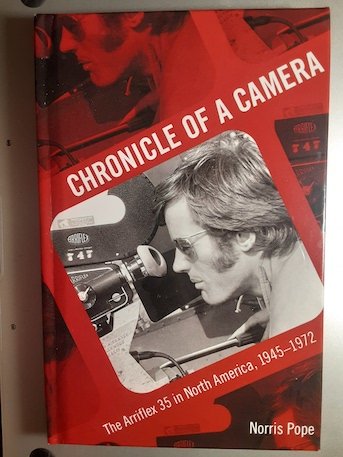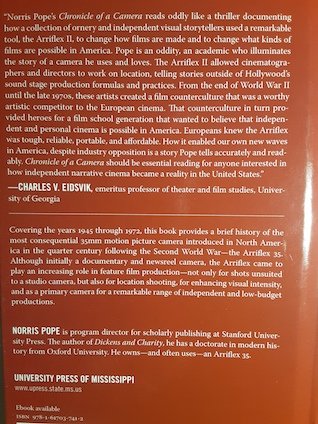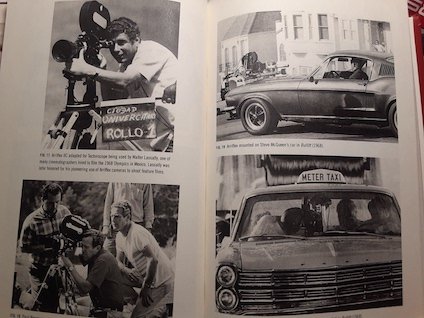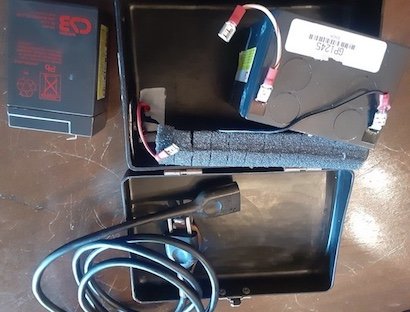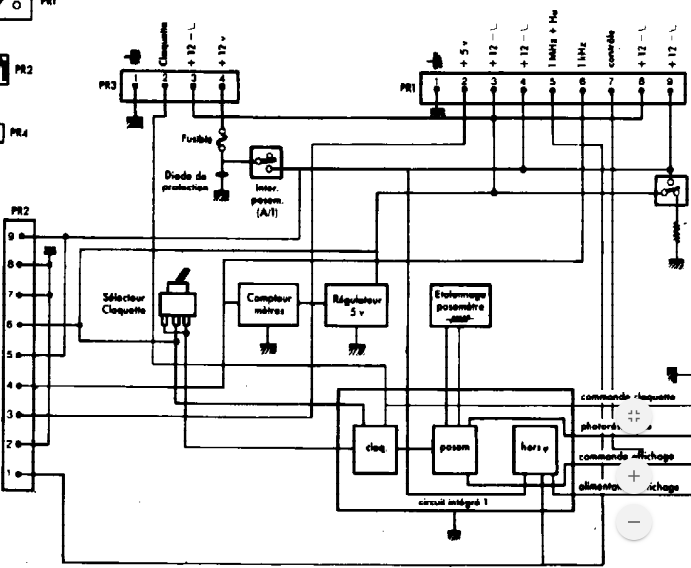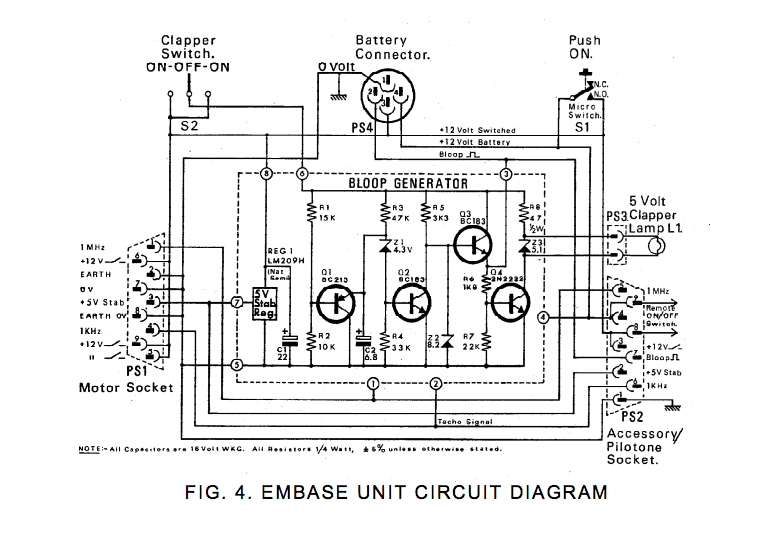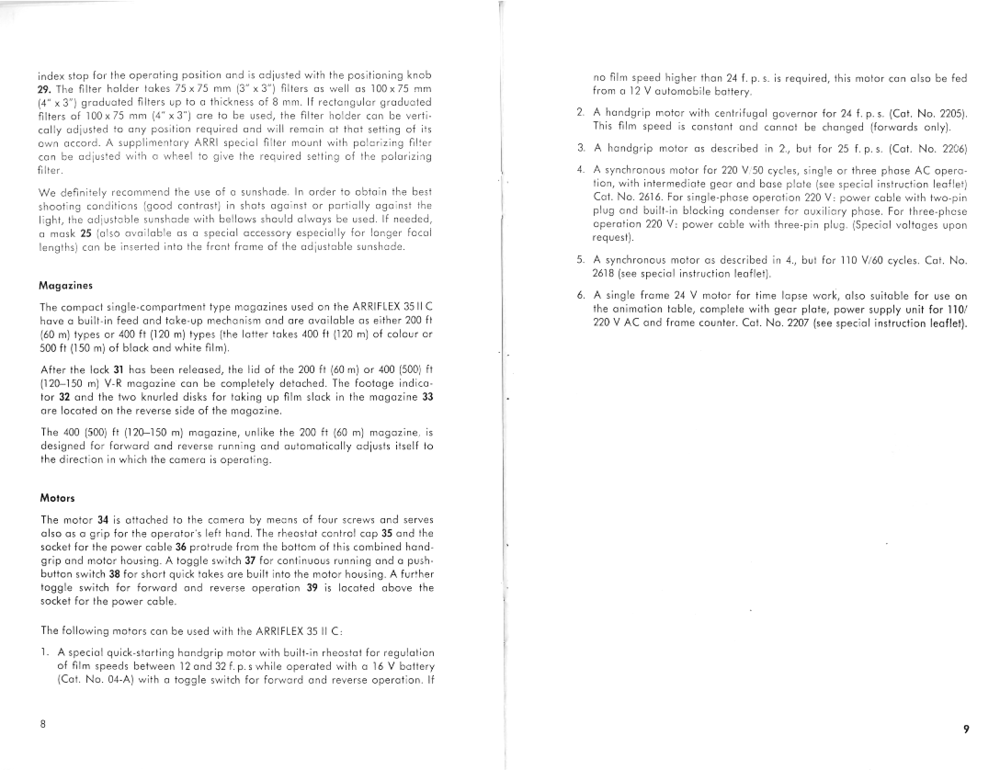
charles pappas
Basic Member-
Posts
175 -
Joined
-
Last visited
Everything posted by charles pappas
-
I'm surprised none of your classmates had any interest in the fresh stock especially at that price. Curious if that is a required course where you attend. Thinking the worst, I assume they think by eventually completing the class they can check off the "shot film," box but don't really want to shoot film. Still I think - if I'm doing the hiring, and I have no doubt I'm wrong - the starting on film is the "best," way to learn movie-making. If I'm a passenger in the jet, I want the pilot who learned to fly in a single-engine prop, not a 737 simulator.
-
Thanks for bringing back memories (and the many helpful hints). Some years between 1985 and 1988 I shot many miles of high school football games with a CP-16/A and dog-leg Ang. 12-120 all on good old VNF (Video News Film). I also had a few disasters, I think once I lost the first half of a game. Loved the camera though, and it was great to be paid to shoot film ($75 a pop). Most of the 16/A 's were raggedy, but I borrowed the best one for a 16 minute narrative film. Somewhere I had met a NASA soundman, Pete, who owned an Nagra 3 and wanted to do narrative work. He did the sound free of course and I edited on a four-gang sync and Zeiss MovieScope. An industrial music group had contributed the soundtrack. Then I went with Pete to the Johnson Space Center one night and he did the final mix-down. An earlier film I had done had an Electro-Print soundtrack, but that window had just closed, so I had to make a real optical track. The check-print or whatever they call it was the only print made. I did it at the late Southwest Film Labs in Dallas. When I was there, there were three 90 year old editors cutting a Fred Williamson movie negative. They had to dust off the Hazeltine and call up the color timer, a woman incidentally, and I think female Hazeltine operators were common. At the time though, this was still the best way to get a decent movie image made and projected. Thanks again.
-
ok
-
Oops, shouldn't trust my gut. I looked up his filmography now, and it seemed to me at the time that Zodiac, Ben Button, Social Network and Dragon should have grossed higher. Panic Room was before those and successful I think, not sure if film or digital. Worth no more that 2 cents.
-
My $0.02 worth too, I've always had the gut feeling that when Fincher switched to video at the time he did (I believe with Collateral) he severely damaged his grosses - they all seemed to underperform. Edit: didn't know he did Gone Girl and Dragon Tattoo. Gone Girl was big hit I think, maybe Dragon Tattoo also.
-
Anyone have a Cinema Products GSMO?
charles pappas replied to Soren James's topic in Cine Marketplace
-
I ordered and received this book several months ago and read it straightaway. The subtitle is "The Arriflex 35 in North America, 1942-1972," and it does cover that topic thoroughly. It is written by Norris Pope, an academic and self-professed owner and user of an Arri II and is available through the University of Mississippi Press for just under $20 delivered. The book is, as mentioned thorough, and is of course well-researched which leads to my only minor "criticism," that some paragraphs of the book read as a laundry list of films made partly or entirely with the camera of honor. More than offsetting that, however, the book contains many fascinating anecdotes about Arri II-made films and those who made them in the timeframe covered, none of which I had come across. My impression is that in researching the book, the author, heard numerous anecdotes about low-budget and exploitation filmmakers and could have written 300 pages instead of 120 pages of narrative, 20 pages of photos and about 40 pages of Appendix and Notes (all well-worth reading) but chose to stay on point, as perhaps befits an academic. Needless to say, the book offers much consideration of this small reflex camera's many influences on the post-war movie-making process, including cinema-verite and documentary filmmaking. One example: the Arri II's role in increasing the accessibility of depth of field manipulation by lower budget productions. I should mention that the book also discusses the Arri II's role in European filmmaking as well as the Camflex's similar role. If niche history of the film industry holds any appeal to you, and you appreciate "hands-on," commemorations of cinematography (sans lighting), I would recommend purchasing this book (assuming a $20 bill is not a onerous burden).
-
One of the Koyanaquastsi (sp?) people, maybe the Monk himself, made a black and white shot-on-video film that I saw during the theatrical release. I can't remember the name of it, but it was in the vein of the others. It was shot in super-high def (at least for the time) video, and was made after Samsara, I think. The b/w video looked excellent as I recall, to my slight disappointment. The movie was, of course, also a tremendous movie. Now that I think about it, I saw Samsara in digital, and was not disappointed. On the topic, broadly, if I think of film (meaning film and video) only as film qua film, I have to say that Koyanaquastsi could be the best feature-length movie ever made.
-
Thank you, seriously, for educating me. As I hear you, the concept is constrained by the physics of the proposed mechanism rather than engineering hurdles, and I'll put it aside.
-
I appreciate the replies and know my post sounded like I thought it would be easier than it is, and I realize that perhaps my ideas are not even possible or feasible. Appo Lettinen: I envisioned removing as many mechanical components in the film drive system as possible, for cost and size reasons. Also for cost and size reasons the LCD shutter. Phil Rhodes: I don't know anything about LCD shutters except that they exist and seemed to be at least feasible for what I envision. Let me say a bit more. I envision a drive mechanism incorporating a motor inside the cores of coaxial film reels which uses the indents of the cores to advance the film the distance between the film perforations. Whether this would be a stepper motor or some other I don't know - perhaps it could a constantly running motor with an circular on-off electromagnet turning the cores or some kind of pop-out ratchet turning the cores. The way I see it, there would be no film loops; instead the opposite. The mechanism would rely on the film tautness to help with registration. In theory at least, if the factory tolerances of the plastic film cores and the distance between the film perforations are good enough, then no electronic feed back loop, based on perforation sensors, would be required to control the motor. If that could be done, I would call that a "dumb," motor. (I know shrinkage of the film over time or expansion-contraction of the film due to temperature would have some effect, just don't know how much.) I think the biggest issue is ensuring no "play," in the film as there are no loops, so very constricting guides in the film path would be needed, perhaps even a kind of four-sided tunnel to run the film through. In the worst case of my "vision," if film "play," cannot be mitigated enough, a retractable pressure-plate, synced with the motor, would needed. Adding to the cost and complexity for sure, but not less feasible than anything else here (I think). The shutter would be directly in front of the feed-side of the two film reels, to help in mitigating film play, all the twisting of the film to get it onto the take-up core would be after the shutter. Anyway, these are my ideas for a camera, ideas that seem to me to be doable and relatively cost-effective, but I would love for them to be debunked so I can forget about it. Conversely, if someone develops and sells this camera and makes any money, throw a bit into my hat please.
-
I don't understand why existing technologies like LCD shutters, small stepper motors, film perforation sensors and video viewfinders emulating the taking lens's focal length and f-stop have not been used to produce quiet, lightweight and relatively cheap 16mm and even 35mm cameras whose size would approach (not equal but get close to) the size of co-axial film cores. Not an engineer, but doesn't seem that hard.
-
So underexposure is the thing now, hey
charles pappas replied to Karim D. Ghantous's topic in General Discussion
With some exceptions as noted above, if one absolutely insists on being able to see actor's expressions and reactions and on being able to get a sense of their surroundings, it is best to view films set in deep caves or tunnels, miles below the sea, or in rooms lit only by one or two candles :). -
Arriflex 35b Power Cable Wanted.
charles pappas replied to tom mcgarrity's topic in Cine Marketplace
-
Arriflex 35b Power Cable Wanted.
charles pappas replied to tom mcgarrity's topic in Cine Marketplace
-
How to Light Moonlight motivated Interiors
charles pappas replied to Haroon Saqib's topic in Lighting for Film & Video
If you care for the opinion of a potential consumer (me) as opposed to only that of a professional cinematographer, and imagining the still you provided as being a representation of the moving image, then I would say that I would consider the image, in all honesty, perfectly lit, if I were sitting close to the image relative to the image size, if the venue I was in was quite dark, and if the scene ran on long enough for my eyes to get used to it. If any of those conditions changed, my suspicion is I would want a little more light. I don't think think that I, as a consumer, would be disabused by or even concerned with the wall lighting or other peripheral lighting as long as the central action was viewable, the location the action took place in was rather small relative to the action, and the scene did not run on long enough for me to start concerning myself with peripheral lightning. If any of those conditions changed, my suspicion is I would spend more time on the lighting, if I had the time and money. -
KNOCK – Part I – Kronos Quartet
charles pappas replied to Marcel Zyskind's topic in On Screen / Reviews & Observations
mini masterpiece -
Looks like ACL II is the same (un-educated guess).PR-3 at upper left hand corner below. http://www.my16mm.com/assets/pdfs/manuals/eclairacl2man.pdf
-
Looks like (on ACL !) pin 1 is neutral, pin 4 positive, and 2 and 3 can be ignored unless you use pilot-tone or bloop (light?). Just an educated guess. http://my16mm.com/assets/pdfs/manuals/eclairacl1man.pdf
-
I understand and I have little knowledge of electricity myself. However it seems to me that the main issue people are having is a cable connector issue, not a battery per se issue. The old camera motors, for example on older Arris and (I believe) older Eclairs, only needed two two wires connected to two pins on each end, positive and a neutral to power the motor (I suspect this is also true on the most modern of film cameras although they may have found a use for extra pins, maybe for variable speed control or something). Getting back to the older battery operated camera motors, which need two pins (or prongs) into the motor and two pins (prongs) into the battery, it seems that simple"banana plug" connectors were used first. Keeping in mind that the pins, prongs, banana plugs, etc., are a convenience - chewing gum or paper clips could in theory be used to connect the two wires to the motor and battery leads. My research suggests that sometime in the late sixties battery and battery belt makers switched from simple prongs to 4 and 5 pin XLR connectors. Now as to why they did this, I have been unable to find out, on the internet. The only reasons that make any sense too me are that the XLR connectors may be a little more structurally sound than prongs (banana plugs) or they turned out to be a little cheaper. However, the 2 or 3 extra pins on the XLR connectors are just dummy pins - they serve no purpose (except to confuse the audience). On this website, and on many other internet sites, there are many posts which should diagram, for a particular XLR manufacturer, which two pins are meant to be used, or active, and which of the other three or four are dummy. There is no question that those multi-pinned XLR's and other such connectors are extremely intimidating to non-techies like myself. I don't think they need to be used however. I think that basically anyone is capable of soldering up two useable wire connectors from the battery leads to the motor leads, or crimping some connectors if soldering is an problem, and making it look decent. I personally did not do that as I had an empty Arri battery box with a female banana plug outlet built-in, and I did not want to take a chance on messing it up. So I took it to Batteries-Plus and the guy sold me batteries and soldered it up. Maybe it was on the other recent post, but others have advised OP's to have a battery shop do this. I think that this could be done contactless, with a phone conversation and leaving the cable or whatever the techie asks for outside, in this age of COVID. (Two asides for readers with more knowledge then me - I don't think there is any issue with motor polarity, is there? - and please correct any misstatements I may have made a I am also trying to learn.)
-
Please tell me what I'm missing on this battery issue.
-
Yes I had seen that, but my main purpose was to correct my prior post saying 16.8 volts. For the OP, just in case, the IIC manual is readily available on-line (for example, from Visual Products), an Arri Parts and Repair Manual is available from I can't remember where but I downloaded it, and our Mr. Dom Jaeger's Cinetinker website has CLA instructions for the II-C.


